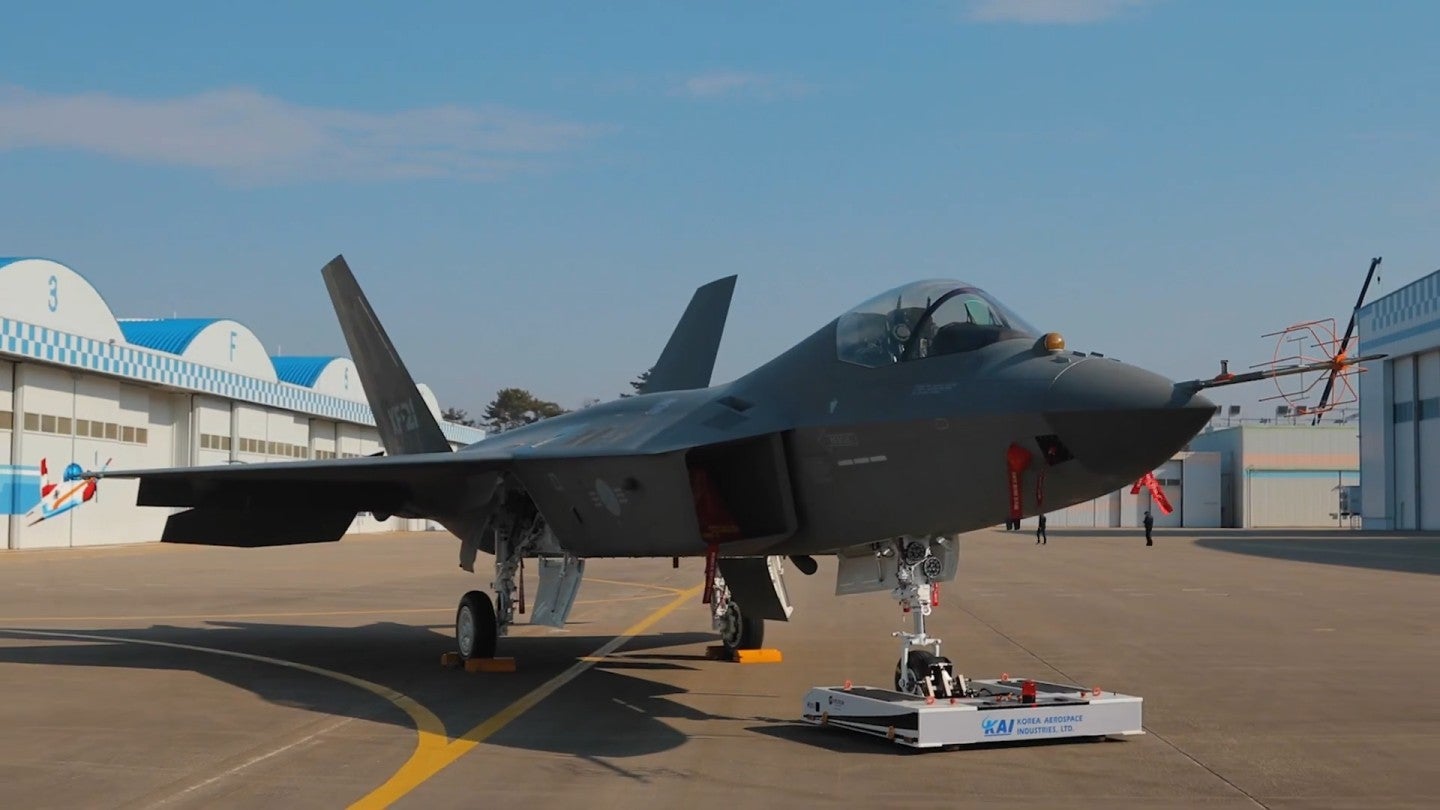
The historical alliance between South Korea and the United States has led to a reliance on US defence equipment and a considerable market share for US suppliers.
However, South Korea’s ongoing indigenous programs indicate its intent to expand its defence capabilities and foster competition within the market.
A policy shift through indigenous programmes
Korea Aerospace Industries (KAI) achieved a major milestone in the country’s defence industry by unveiling the KF-21 Boramae fighter jet prototype. The KF-X program, initiated on 9 April 2021, witnessed the domestic production of the twin-engine jet, representing a significant stride in South Korea’s defence capabilities.
South Korea’s President announced that the Air Force is set to receive 40 KF-21s by 2028, with plans to put an additional 80 jets into service by 2032.
The KF-21 Boramae, a fighter jet, is expected to play a crucial role in South Korea’s defence strategy. The program signifies a significant investment in the nation’s defence sector with a projected contract allocation of $7.8bn over 2023-2033. Each KF-21 unit is estimated to cost approximately $65m.
In parallel, KAI is also making remarkable progress in developing the KAI Light Armed Helicopter (LAH) for the Republic of Korea Army (RoKA). Designed for various tasks, including personnel transport, escorting, close-air support, and light attacks.
With plans to replace the ageing fleet of Bell AH-1 Cobra and MD 500 Defender helicopters, the RoKA is expected to procure up to 200 LAHs, according to GlobalData. The first LAH is anticipated to commence operations with the RoKA by 2023, marking an important milestone in modernising the Army’s rotary-wing assets.
The estimated contract allocation for 210 KAI Light Armed Helicopter (LAH) units amounts to $4.5bn over 2022-2033. KAI’s collaboration with Airbus, utilising the Airbus H155 helicopter as the platform for the LAH, demonstrates international cooperation in delivering state-of-the-art defence solutions.
Dependence on US exports
In addition to these indigenous programs, the South Korean Air Force continues its modernisation efforts by employing 40 F-35A Lightning II multirole fighter aircraft. The F-35A Lightning II was procured under the F-X III aircraft procurement competition.
Lockheed Martin, the primary supplier of the F-35A Lightning II, plays a pivotal role in supporting South Korea’s defence modernisation goals. The ongoing partnership between the two entities underscores the longstanding collaboration between South Korea and the United States in the defence sector.
The cumulative market value for the South Korean military fixed-wing sector is estimated at $9.2 billion, with a positive compound annual growth rate (CAGR) of 8.1%, according to GlobalData’s “South Korea Defence Report 2023-2028” report. The South Korean defence market’s growth is propelled by ongoing and planned programs such as the KF-21 Boramae and F-35A Lightning II acquisitions.
While the South Korean defence market presents significant opportunities, the entrenched presence of US defence suppliers poses challenges for other international players.
As South Korea confronts persistent military threats from North Korea, it prioritises military expenditure and technological advancements to ensure national security. With a focus on modernisation and indigenous defence programs, South Korea aims to effectively combat external security challenges and bolster its defence capabilities in the coming years.








